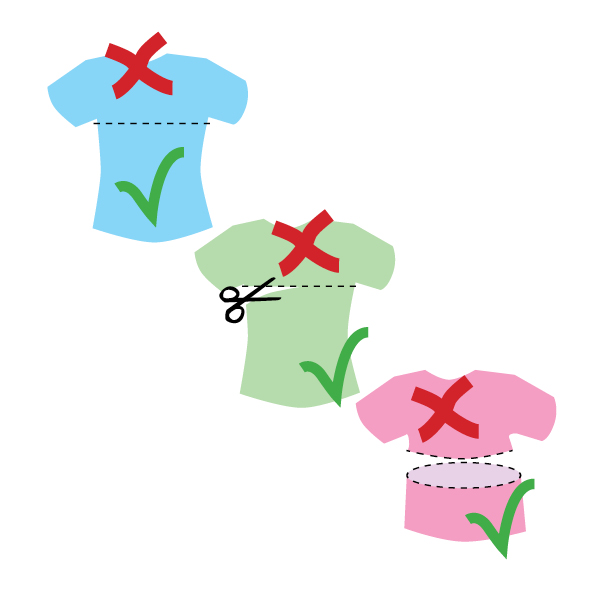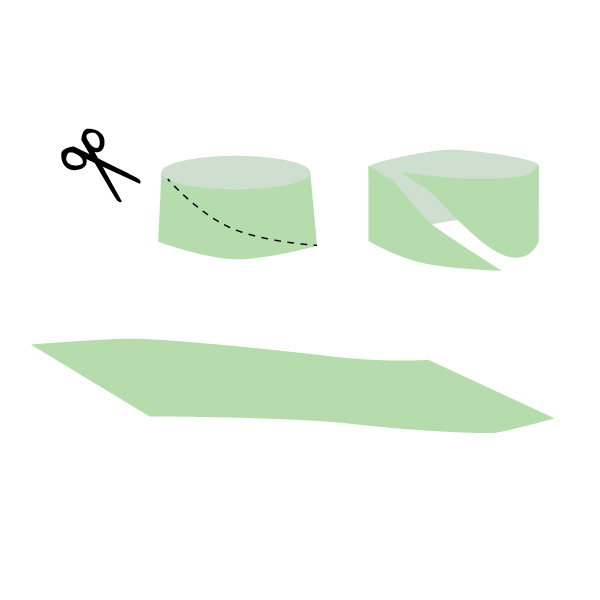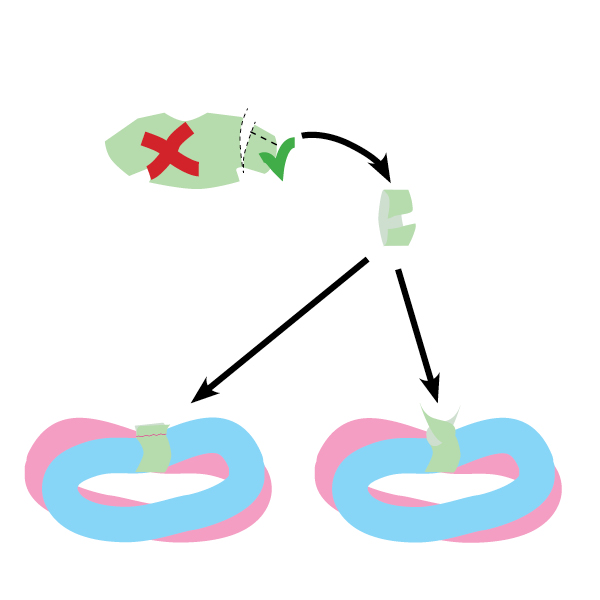| |
Easy Newborn Carrier From 3 T-shirts
This simple carrier is especially good for small babies and requires NO pattern, NO sewing, NO tying. Great for skin-to-skin kangaroo care. While most commercial Dual Pouch Carriers are safety rated up to about 30lbs, for practicality's sake they normally start to sag uncomfortably after about 15lbs. Download a printable pdf version of this tutorial: Dual_Pouch_Tutorial.pdfAs a safety reminder, stretchy carriers should never be used for back carries.Materials Needed Find 3 t-shirts that are slightly too small for you. You want seamless t-shirts (no seams/stitching down the sides) that are made of 100% cotton jersey (regular t-shirt material.) Avoid ribbed tank tops or paper-thin t-shirts. You can find cheap t-shirts at thrift stores, solid color t-shirts at most craft stores (on the aisles with tie dye kits and appliques) or check the men’s underwear department at your local big-box store for packs of plain white undershirt t-shirts. Just make sure they are at least a size too small and seamless. Jersey stretches; you want as much support as possible. The ideal size once you have the carrier cut and on is to be thinking, "I barely fit in here; how am I supposed to fit a baby in here, too?!" You will also need a pair of sharp scissors. A sewing machine (or needle and thread for hand sewing) is optional for step 3. Step 1: Cut The Bottoms Off
While this carrier is excellent for full-term, healthy newborns, premature infants may need more core support (such as a ring sling or woven wrap) than a stretchy wrap can provide. Please consult your baby's doctor and do not use this style of carrier until the assure you that your newborn is progressing like a healthy, full-term newborn.
 |
Cut all three shirts straight across right below the armpits so you have three seamless loops of fabric. No need to hem; jersey won’t unravel. If you choose to hem, use a zigzag or stretch stitch, otherwise the stitches will snap when the fabric stretches. |
 |
Choose one t-shirt to be your “sash.”
Cut it through ONLY the front layer diagonally from one armpit down to the opposite hip.
The result should be a long, narrow parallelogram. |
 |
Optional Step: Bunch up the two tube pieces and lay them on top of each other. Using a small scrap from the tops of your t-shirts, such as a cut off sleeve, sew or tie your two tubes together at one point. This point will be worn in the back. (If you choose to skip this step, you will simply wear the two loops the exact same way, there will just be nothing attaching them in the back.) |
This video shows how to wear a brand-name K'tan baby carrier. There are some differences, but she thoroughly covers proper technique and fitting.Safety Make sure baby stays upright, supported, visible, kissably close. Make sure baby is always supported by all three passes. Jersey gets saggy with bigger babies, so this carrier is only really a viable option for them when they are very small. This is NOT a safe carrier for back carries. Always refer to TICKS for safety, and as with any stretchy carrier, ALWAYS use all three passes to support baby, even if they are small enough that two passes "feels" safe. --
| I | Attachment | History | Action | Size | Date | Who | Comment |
|---|---|---|---|---|---|---|---|
| |
Dual_Pouch_Tutorial.pdf | r1 | manage | 30.0 K | 2017-03-30 - 15:26 | AlyssaLeonard | |
| |
dual_pouch_pictures.jpg | r1 | manage | 77.9 K | 2017-03-30 - 15:26 | AlyssaLeonard | |
| |
dual_pouch_pictures2.jpg | r1 | manage | 51.1 K | 2017-03-30 - 15:26 | AlyssaLeonard | |
| |
dual_pouch_pictures3.jpg | r1 | manage | 75.4 K | 2017-03-30 - 15:26 | AlyssaLeonard |
Topic revision: r5 - 2017-04-04 - AlyssaLeonard
Ideas, requests, problems regarding TWiki? Send feedback



